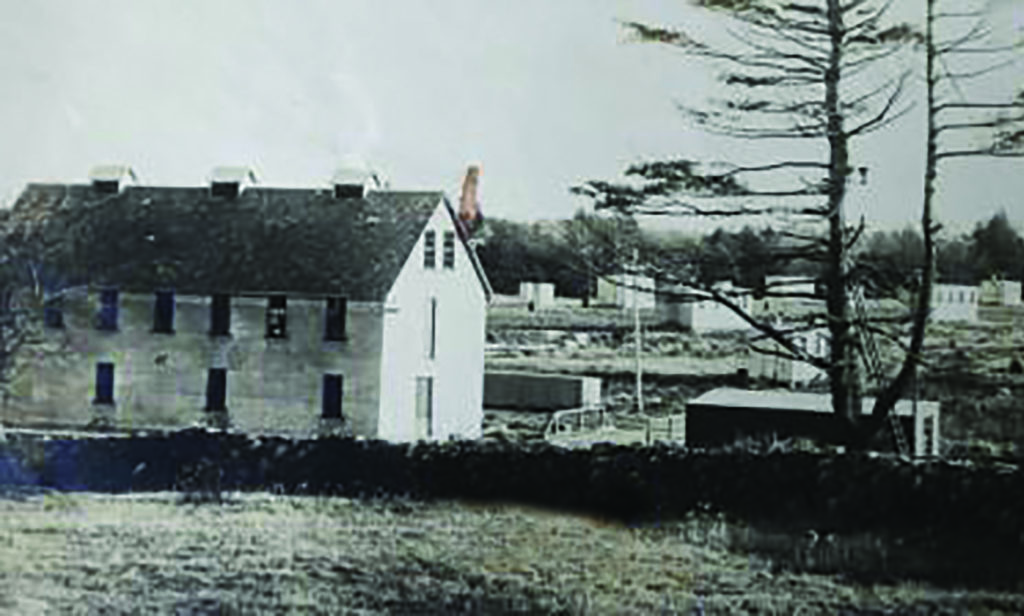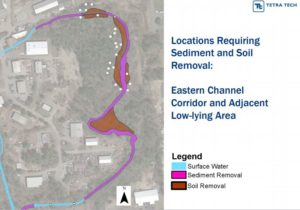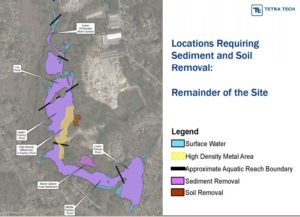Lend your voice to help us tell the DEP we want the Fireworks Site cleaned up, our rivers left as healthy as before they were contaminated, and a future that allows for reconnecting habitat in our river system without fear of future contamination left behind by an inadequate clean up. Click here to read the comment letter.
Donate Now to help us continue to be a strong voice for protecting our waters.
 A public meeting was held on September 24, 2019 to seek input for three alternative clean-up proposals of the contamination at the Fireworks Site, located on the Drinkwater and Indian Head River in Hanover/Hanson. The presentations can be found at the town of Hanover’s Fireworks website. The Draft Remedial Action Plan outlining the three alternatives for clean up can be found here.
A public meeting was held on September 24, 2019 to seek input for three alternative clean-up proposals of the contamination at the Fireworks Site, located on the Drinkwater and Indian Head River in Hanover/Hanson. The presentations can be found at the town of Hanover’s Fireworks website. The Draft Remedial Action Plan outlining the three alternatives for clean up can be found here.
The contamination at this site is extensive and stems from multiple uses including the manufacturing of fireworks and munitions for World War II (Click here to see the history of the site). The main contaminants of concern include mercury, lead and volatile organics.
Since 1995 the Massachusetts Department of Health has issued a health advisory that the general public should not eat any fish caught from the North River/Indian Head River/Drinkwater Rivers from Forge Pond dam in Hanover to the Route 3 overpass because of mercury contamination. Extensive munitions and ordinances were also left on the site. The removal and detonation of these items is ongoing and has resulted in the area being off limits for the public.
The clean-up is expected to cost from $78 to $121 million depending upon the alternative chosen. The costs will likely be born by the responsible parties including MIT, Department of Defense and others who operated at the site. The most likely alternatives currently being considered include removing the contamination in the waterways, land and groundwater either to targeted levels that are protective of public health and the environment or approaching background levels. The costs differences between these two alternatives is approximately $5 million. The Draft Remedial Action Plan outlining the three alternatives for clean up can be found here and is open for comment until October 25, 2019. Comments can be emailed to FireworksRAPcomments@tetratech.com
Factory Pond Dam Still Left with Mercury?
Much of the contamination is in the sediments that lie within a tributary called the Eastern Channel Corridor, and two shallow impoundments – Factory and Lily Pond, both created from dams on the Drinkwater River which flow into the Indian Head River. Factory Pond dam contains the contaminated sediments, and has largely prevented them from moving downstream into the Indian Head and North River system.
Even the most aggressive clean up alternatives proposed will have the potential to leave some mercury in the sediments close to the dam because of concerns of undermining it by excavating too close to it. If mercury is left close to the dam, that may preclude any potential future dam removal at this site and/or would leave the downstream river vulnerable to mercury contamination if the dam should fail. The clean-up of the sediments in Factory Pond should allow for future consideration of removing this dam and reconnecting and restoring this river habitat.
Dam Undersized and Poor Maintenance History
In 2013 the state issued a certificate of noncompliance to the towns of Hanover and Hanson for the Factory Pond dam due to structural defects and lack of maintenance. In 2011 an engineering report on the condition of the dam cited that there was no information available to understand if this dam’s spillway is large enough to allow larger storm events to pass without breaching. In 2014, the state provided a $150,000 grant for repairs at the Factory Pond dam, improving its condition. However, because of increased intense precipitation events due to climate change, the alternatives should examine the design flows that this dam can pass and a clean-up supportive of future potential dam removal should be considered. If the dam is to stay in place there should be some assurance it won’t fail with larger storm events predicted in the future. Even if citizens today are not supportive of dam removal now, this option should not be taken away from future generations, nor should the towns be burdened in perpetuity with maintaining this dam if they no longer wish to or can’t afford to.
The public comment period on the Draft Remedial Action Plan ends on October 25, 2019 and we encourage you to make your voice heard. Comments can be emailed to FireworksRAPcomments@tetratech.com



